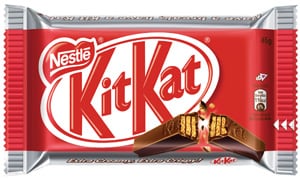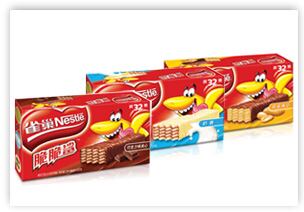Overall, the company’s experienced 6% organic sales growth to €36.6bn (CHF 44.1bn) compared to the same period last year and around 6% improved operating profit to €4.9bn (CHF 6.6bn).
Sales in its confectionery business grew almost 12% to €3.8bn (CHF €4.6bn), however operating profit fell around 3% to €531m (CHF 638m) with profit margins declining 210 basis points.
Of Nestlé’s seven product segments, confectionery is the sixth largest in terms of sales.
Europe bites
Nestlé chief financial officer Wan Ling Martello said during Nestlé conference call this morning that restructuring costs and the European economy were to blame for the fall in confectionery margins.
The company’s overall sales in Europe grew at slower rates than all other regions worldwide, with hits taken in the troubled economies of Portugal, Italy, Greece and Spain.
In March, Nestlé launched Díselo con Chocolate, a new website for Spanish consumers to order a personalised selection of Nestlé Caja Roja praline chocolates, which it hopes will overturn its fortunes in the Spanish market.
The company had previously complained of high sugar prices in the EU market.
Last month, Tim Innocent, head of purchasing, direct materials, at Nestlé gave evidence at a House of Lords Select Committee in the UK and complained that the EU sugar supply was constrained, leaving the confectionery industry nervous about upcoming sugar reforms.
Kit Kat strength
Despite taking a hit in Europe, Nestlé lauded the strength of its Kit Kat brand in other geographies where it reported market share gains.
It said that the chocolate was a key driver behind double-digit growth in Latin America following the launch of Kit-Kat in Brazil.

Nestlé also reported growth in its Garoto business in Brazil, which it acquired for $354 million in 2002.
Kit Kat was also said to be strong in the Middle East, India, Japan and even in Europe.
However, Nestlé could not rely so heavily on the strength of the Kit Kat brand in the US where it is made under licence by Hershey.
US confectionery performance was helped though by low-fat frozen snacks brand Skinny Cow, which was launched last year.
Chinese partnerships
Nestle reported that its confectionery business in the emerging Chinese market was growing through partnerships.
Last year, Nestlé secured deals for Chinese firms Hsu Fu Chi and Yinlu.
Nestlé snapped up a 60% share of Chinese confectionery firm Hsu Fu Chi for US $1.7bn in December last year.
Hsu Fu Chi was the second largest confectionery player in China in 2010 with a 4.3% share, according to figures from Euromonitor International.
Nestlé has upped its share of the Chinese confectionery sector from 1.8% in 2010 to 6.8% today through the Hsu Fu Chi buy, but still finds itself someway behind market leader Mars, which commands a 17.5% share.

Nestlé expects a tough trading environment globally for the remainder of the year, but expects final fiscal 2012 organic growth of 5-6% for the whole group.
